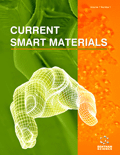Abstract
Background: We explored the profiles of binding energy (BE) and interband emission energy (IEE) of impurity doped quantum dots (QDs) in presence and absence of Gaussian white noise. In this context, change of BE and IEE by varying several pertinent parameters such as electric field, magnetic field, confinement potential, dopant location, dopant potential and aluminium concentration had also been carried out.
Methods: Time-independent Schrödinger equation has been solved variationally by expressing the wave function as a linear combination of product of harmonic oscillator eigenfunctions. Results: Introduction of noise caused enhancement and depletion of BE and IEE which used to depend upon its pathway of application. The effective confinement potential and the difference between the impurity-free ground state energy and the binding energy played anchoring roles in designing the BE and IEE profiles, respectively. Conclusion: The findings highlighted the governing role delineated by noise in tuning the BE and IEE of QD systems containing impurity.Keywords: Quantum dot, impurity, binding energy, interband emission energy, Gaussian white noise.
Graphical Abstract
 13
13


